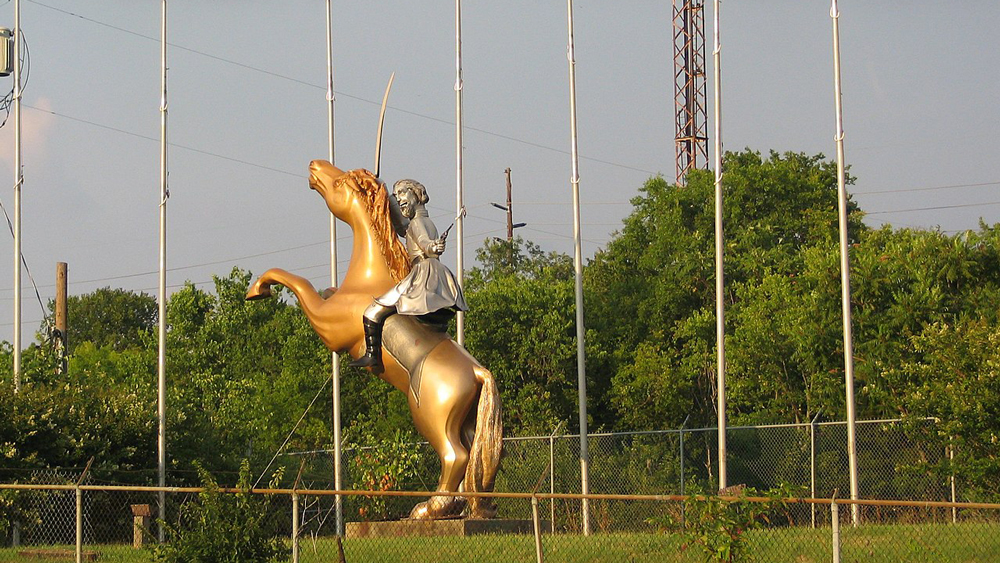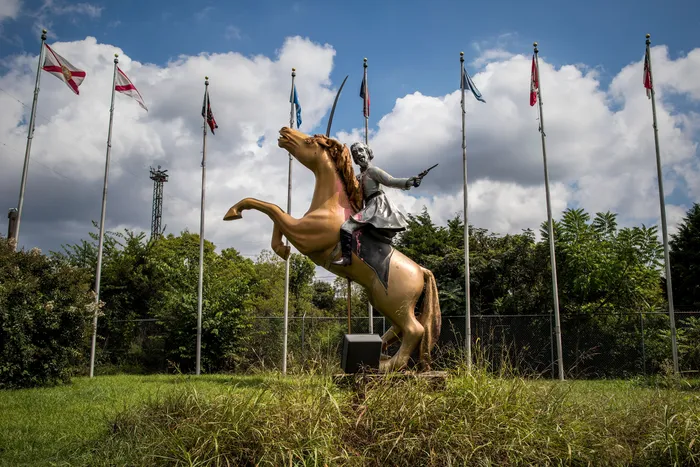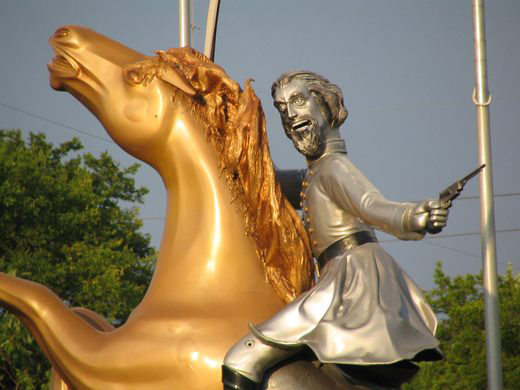Introduce

In Nashville, Tennessee, near Interstate 65 on 701D Hogan Road, there once stood a statue that stood 25 feet (7.6 meters) tall, which was the Nathan Bedford Forrest statue. This statue is based on Nathan Bedford Forrest, a lieutenant general of the Southern Alliance during the Civil War and the great wizard of the First Age “Ku Klux Klan,” and is mounted on a horse. The statue, unveiled in 1998, presents the image of Forrest shooting behind him, with Confederate flags on both sides.
The Heroes and Controversies of the Southern Alliance
Nathan Bedford Forrest was an important general of the Southern Alliance during the Civil War and one of the founders of the Kukskeland organization. He performed excellently in the Civil War, but his involvement in the history of Kukskeland also made him highly controversial. Forrest played a complex and multifaceted role in history, which led to divergent evaluations of him.
Historical Review and Unveiling of Statues

In 1998, the statue of Nathan Bedford Forrest was unveiled in Nashville to commemorate the contributions of this Confederate general. However, the unveiling of this statue has also sparked intense controversy. One side believes that the statue is a commemoration of southern history, while the other side points out that Forrest’s connection with Kukskeland has caused indelible harm to black people and other ethnic minorities.
The Symbolic Meaning and Controversy of Statues
The sculpture of Nathan Bedford Forrest vividly portrays the image of Forrest, but also implies his strength and determination. The Southern Alliance flags on both sides of the statue represent the values and history of the Southern Alliance. However, the significance represented by this statue is not only a historical review, but also involves contemporary issues such as racial relations, social justice, and cultural identity, which has sparked intense debate in society.
Social Changes and the Removal of Statues

Over time, society’s perception of the statue of Nathan Bedford Forrest has changed. Amidst escalating controversy and social demands, this statue was ultimately demolished in 2020. The decision to demolish the statue is not only a reflection of history, but also reflects the constantly evolving values of society towards racial relations, equality, and justice.
Reflection and Future
The removal of the statue of Nathan Bedford Forrest to some extent represents society’s efforts to reflect on history and solve contemporary problems. The fate of this statue has become an example, telling us that history is not static, but constantly evolving. By understanding and reflecting on history, we can better understand the past and shape the future.
Epilogue
The existence of the statue of Nathan Bedford Forrest in Nashville is not only a part of the history of the Civil War, but also a mirror of changes in social values and racial relations. Its unveiling, controversy, and eventual removal all reflect the complexity of history and social changes. The story of this statue tells us that history is the medium through which we converse with the past and the source of reflection and shaping in the present.

